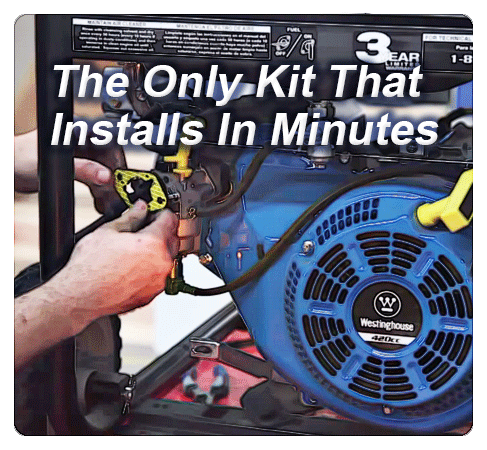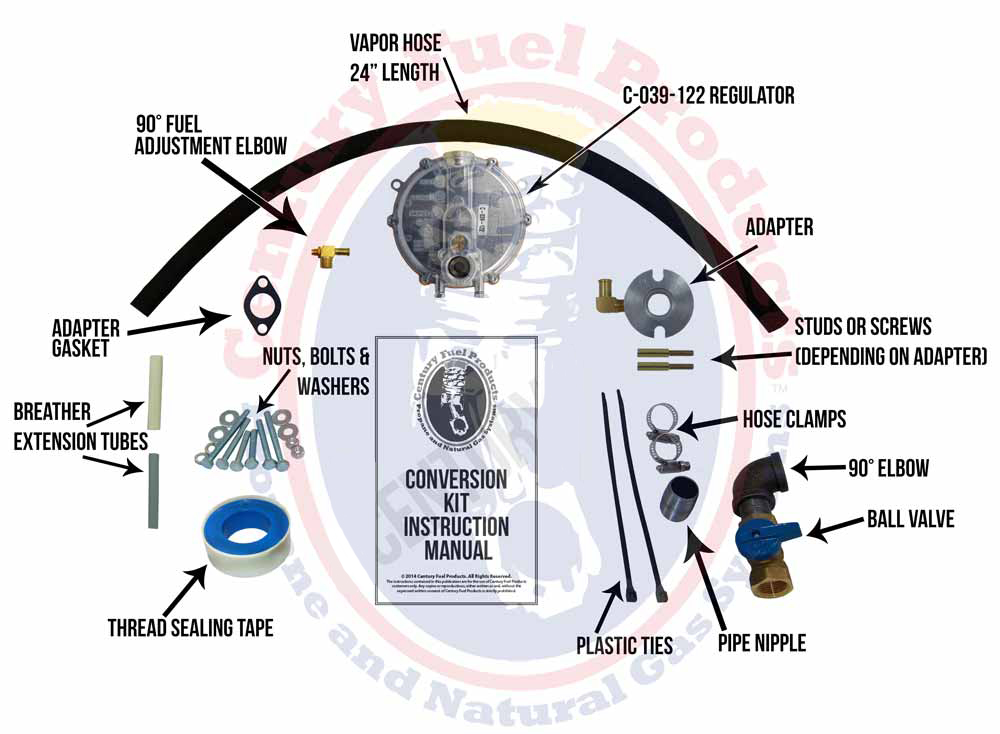Disclosure: This post contains affiliate links and I will be compensated if you make a purchase after clicking through my links. Learn More
To convert a propane generator to natural gas, install a conversion kit and adjust the fuel regulator. Follow manufacturer guidelines for safety.
Converting a propane generator to natural gas can be a practical and cost-effective solution. Natural gas is often cheaper and more readily available than propane. This makes it an attractive option for generator owners. The conversion process involves installing a conversion kit and adjusting the fuel regulator to accommodate natural gas.
It’s crucial to follow the manufacturer’s instructions and safety guidelines during the conversion. Proper conversion ensures the generator runs efficiently and safely. Always consult a professional if unsure about any step in the process. This can prevent potential hazards and ensure optimal performance of your generator.
Safety Precautions
Converting your propane generator to natural gas can be rewarding. But safety must be your top priority. Following proper safety measures can prevent accidents and ensure a smooth conversion process.
Necessary Safety Gear
Before starting the conversion, make sure you have the right safety gear. This helps protect you from potential hazards.
| Safety Gear | Purpose |
|---|---|
| Safety Glasses | Protect your eyes from debris and gas. |
| Gloves | Shield your hands from sharp objects and chemicals. |
| Face Mask | Prevent inhalation of harmful fumes. |
| Fire Extinguisher | Be ready for any fire emergencies. |
Common Hazards
Understanding common hazards can help you avoid them. Here are some potential risks:
- Gas Leaks: Always check for leaks before and after conversion.
- Fire Risks: Keep flammable objects away from the work area.
- Sharp Tools: Use tools carefully to avoid cuts and injuries.
- Electrical Hazards: Disconnect the generator from any power source.
Follow these safety tips to ensure a safe conversion process. Always be cautious and prioritize your safety.

Tools And Materials
Converting a propane generator to natural gas requires specific tools and materials. Having the right items will ensure a smooth conversion process. Below, you’ll find a detailed list of the essential tools and required materials.
Essential Tools
For a successful conversion, you will need the following tools:
- Wrench Set: To tighten and loosen nuts and bolts.
- Screwdrivers: Both flathead and Phillips screwdrivers are needed.
- Drill: Useful for making holes if necessary.
- Pipe Wrench: To handle gas lines safely.
- Thread Tape: Ensures a secure seal on connections.
Required Materials
The conversion also requires specific materials. Make sure to gather:
- Natural Gas Conversion Kit: Usually includes all necessary adapters and hoses.
- Natural Gas Regulator: Controls the gas flow to the generator.
- Hose Clamps: Secures hoses in place.
- Gas Line: Connects the natural gas source to the generator.
- Sealant: Ensures no gas leaks at connections.
Below is a quick reference table for the tools and materials:
Preparing The Generator
Converting a propane generator to natural gas involves several steps. Proper preparation ensures a smooth conversion process. Follow these guidelines to get your generator ready.
Inspecting The Unit
First, inspect the generator. Look for any signs of damage or wear. Ensure all parts are in good condition. This step is crucial for safe operation.
- Check the fuel lines for cracks or leaks.
- Examine the engine for oil leaks or rust.
- Ensure the air filter is clean and free of debris.
Document any issues you find. Fix them before proceeding to the next step. A well-maintained generator ensures a successful conversion.
Disconnecting The Propane Supply
Before you start, make sure the generator is off. Safety first!
- Locate the propane supply valve.
- Turn the valve to the “off” position.
- Disconnect the propane hose from the generator.
Store the propane hose safely. You won’t need it for the natural gas setup. Ensure the valve is completely closed to prevent leaks.
Double-check that all connections are secure. You are now ready to move on to the next steps in the conversion process.
Installing The Conversion Kit
Converting a propane generator to natural gas can save you money. It can also reduce your carbon footprint. The key step is installing the conversion kit. Here’s how to do it.
Choosing The Right Kit
Look up your generator’s model number and find a matching conversion kit. Read what other users say about different kits online. Make sure the kit has all the parts you need, including hoses, connectors, and mounting hardware. Pick a kit from a trusted brand that offers good customer support and clear instructions.
Step-by-step Installation
- Turn off the generator. Ensure it is cool before starting.
- Disconnect the propane supply. Remove the propane tank if necessary.
- Remove the air filter. This gives you access to the carburetor.
- Attach the conversion kit adapter to the carburetor.
- Connect the natural gas hose to the adapter.
- Secure all connections with clamps and ensure there are no leaks.
- Reinstall the air filter and check all components.
- Turn on the natural gas supply. Test the generator for proper operation.
Follow these steps carefully. This ensures a successful conversion. Your generator will now run on natural gas efficiently.
Connecting To Natural Gas Supply
Converting your propane generator to natural gas can save money. It can also provide a more stable fuel source. One crucial step is connecting to the natural gas supply. This process involves several steps to ensure safety and efficiency.
Locating The Gas Line
First, find the gas line in your home. The gas meter is usually outside. It connects to a pipe that goes into your home.
Use a pipe wrench to trace the gas line. Ensure the line is in good condition. Look for any damage or leaks before proceeding.
Securing Connections
Now, you need to secure the connections. Use a flexible gas hose with the right fittings. These fittings ensure a tight seal.
- Attach one end of the hose to the gas line.
- Secure the other end to the generator.
Check all connections twice. Any loose connection can lead to leaks. Always use a gas leak detector for added safety.
Below is a table showing the tools needed for securing connections:
| Tool | Purpose |
|---|---|
| Pipe Wrench | Tighten gas line connections |
| Gas Leak Detector | Check for gas leaks |
| Flexible Gas Hose | Connect gas line to generator |
| Teflon Tape | Seal threaded connections |
Follow these steps carefully. This ensures a safe and efficient conversion to natural gas.

Testing The Setup
After converting your propane generator to natural gas, the next step is testing. This step ensures everything works smoothly and safely. Follow these steps to complete the testing process.
Initial Startup
Start by turning on the gas valve. This lets natural gas flow to the generator. Ensure the generator’s switch is in the “off” position.
Next, prime the system. This removes any air trapped in the lines. Turn the generator’s switch to “on” and press the start button. The generator should start within a few seconds.
Listen for unusual noises. The engine should run smoothly and steadily. If it struggles, turn it off and check the connections.
Checking For Leaks
After the initial startup, the next step is checking for leaks. Leaks can be dangerous, so this step is crucial.
Mix a solution of soapy water in a spray bottle. Spray this solution on all connections and joints. Look for bubbles forming, which indicate a leak.
If you find a leak, turn off the gas and tighten the connection. Test again with the soapy water solution.
Ensure there are no leaks before using the generator. Safety is the top priority.
| Steps | Actions |
|---|---|
| 1. Turn on Gas Valve | Allow gas to flow |
| 2. Prime the System | Remove air from lines |
| 3. Start Generator | Press start button |
| 4. Check for Noises | Listen for smooth running |
| 5. Mix Soapy Water | Prepare in spray bottle |
| 6. Spray Connections | Check for bubbles |
| 7. Tighten Connections | Fix any leaks |
Maintenance Tips
Maintaining a converted propane generator is crucial. Proper care ensures its efficiency and longevity. Regular checks and fixes keep it running smoothly. Below are some essential maintenance tips.
Regular Inspections
Conducting regular inspections is vital. Check the generator every month. Look for any leaks or damages. Ensure all connections are tight. Inspect the oil levels and change the oil every 100 hours of use.
Follow this checklist:
- Check fuel lines for cracks.
- Inspect air filters and clean them.
- Examine spark plugs and replace if needed.
- Test battery voltage and charge if low.
Troubleshooting Common Issues
Knowing how to troubleshoot common issues can save time and money. Here are some typical problems and their fixes:
| Issue | Possible Cause | Solution |
|---|---|---|
| Generator won’t start | Empty fuel tank | Refill the tank with natural gas. |
| Low power output | Dirty air filter | Clean or replace the air filter. |
| Engine overheating | Low coolant level | Add coolant to the engine. |
| Strange noises | Loose parts | Tighten all bolts and screws. |
For more complex issues, contact a professional. Regular maintenance and quick troubleshooting keep your generator in top condition.

Frequently Asked Questions
Can You Convert A Propane Generator To Natural Gas?
Yes, you can convert a propane generator to natural gas using a conversion kit.
What Tools Are Needed For Conversion?
You’ll need a conversion kit, wrenches, screwdrivers, and possibly a drill.
How Long Does The Conversion Take?
The conversion process typically takes about 1-2 hours.
Is Professional Help Required For Conversion?
It’s recommended to seek professional help to ensure safety and proper installation.
Final Words
Converting your propane generator to natural gas can save money and reduce emissions. Follow the steps carefully for a smooth transition. Ensure all connections are secure and test the generator before regular use. This guide helps you achieve a reliable and eco-friendly power solution.
Enjoy the benefits of a cleaner energy source.


